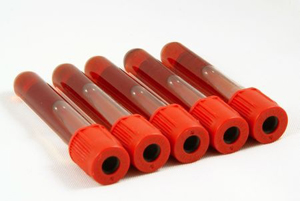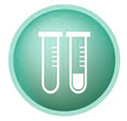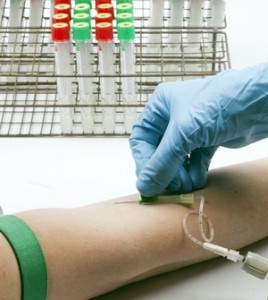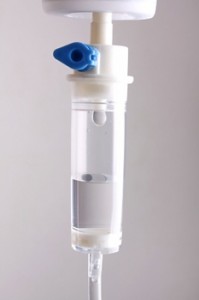
 The Haverford Wellness Center is dedicated to testing for an accurate diagnosis of Lyme disease. Of course, that seems medically logical. But Lyme is a very evasive bacteria and unlike other bacteria, getting an “accurate positive” test is complicated, even controversial. There are various tests for various stages, the laboratory work has to be very precise, and there are many roads that lead to false conclusions. Throw in other infections that affect the test results and you get a picture of the challenge we both face. However, we have the knowledge, experience and patience and a methodical approach to move through these challenges to obtain an accurate diagnosis of Lyme disease.
The Haverford Wellness Center is dedicated to testing for an accurate diagnosis of Lyme disease. Of course, that seems medically logical. But Lyme is a very evasive bacteria and unlike other bacteria, getting an “accurate positive” test is complicated, even controversial. There are various tests for various stages, the laboratory work has to be very precise, and there are many roads that lead to false conclusions. Throw in other infections that affect the test results and you get a picture of the challenge we both face. However, we have the knowledge, experience and patience and a methodical approach to move through these challenges to obtain an accurate diagnosis of Lyme disease.
We know as a patient this is frustrating. There’s an “accurate positive test” for the HIV virus and for so many other bacteria. Why not Lyme? The answer is long and complicated, so we’ll just try and give you a layman’s understanding, and explain our process for an accurate diagnosis of Lyme disease. You can always ask more questions at your first meeting (or anytime for that matter). See Our Approach.
Lyme disease Symptoms vs. the Lyme bacteria – A big difference
For most patients, diagnosis of Lyme disease remains clinically based, that is, a diagnosis based primarily on symptons of lyme disease alone because, unfortunately, there is no test available that is 100 percent accurate to rule out or confirm the infection. False positive results and false negative results are common. However, for us, symptons of lyme disease alone are not enough. At the Haverford Wellness Center we go the extra mile to make sure the infection is present before we start treatment. Accordingly, the patient’s entire clinical picture is taken into account when diagnosing and treating Lyme disease.
“The fact is that there is NO test available that
when it’s negative means you don’t have Lyme disease”
Lyme Testing is a problem
Amazingly, the lack of an accurate diagnostic test also means that most medical professionals cannot precisely determine whether someone is cured. This leads to contradictory treatment protocols and results in treatment guidelines that are more guesswork than many patients prefer, and less exact than many physicians and health insurance companies are comfortable with. Again, however, we take the approach that we want scientific proof that the organism is gone, and not just “symptom recovery”.
 Since Lyme disease was not recognized in the United States until 1977, scientific research is lagging and there is much we don’t know. However, based on years of experience we have dedicated ourselves to using a scientific model, and eliminating as much guesswork as possible.
Since Lyme disease was not recognized in the United States until 1977, scientific research is lagging and there is much we don’t know. However, based on years of experience we have dedicated ourselves to using a scientific model, and eliminating as much guesswork as possible.
Common Lyme Testing problems and false results
The most common and current tests available today are limited to determining if antibodies to the Bb organism exist. The body creates antibodies after being exposed to the Bb organism. Lyme antibodies can remain in a person’s body long after the Lyme organism has been eliminated. This means that a positive Lyme antibody test does not accurately indicate if active Lyme bacteria continue to be present in the body.
The ELISA and Western Blot tests are the most common tests currently used to confirm the presence of Bb antibodies. The first step calls for a test such as the ELISA to be conducted. If positive, a Western Blot test is done in hopes of confirming that Lyme antibodies exist. However, even if Lyme antibodies exist, it does not mean that the patient has Lyme disease.
Further complicating matters is the fact that antibody tests can confuse Lyme antibodies with antibodies created by other complications in the body, including antibodies created in reaction to bacteria other than the Bb organism. This means that most of these two tests are not completely accurate. It also means that it is common to receive false positive and false negative results when using the ELISA or Western Blot tests. In other words, a negative test result cannot guarantee that Lyme antibodies do not exist. Conversely, a positive test result cannot guarantee that you actually have Lyme antibodies in your system. In both cases, accurate positive antibody test results do not mean that you even have active Lyme bacteria in your system.
The PCR Test – the gold standard for Lyme disease tests
Not as well known but very effective is the PCR test. The Polymerase Chain Reaction (PCR) test confirms that Lyme bacteria are present in the body. The PCR test is relatively new. It is designed to confirm that Lyme bacteria DNA are present. A positive PCR test almost always guarantees that you have Lyme disease, depending upon the accuracy of the lab that performed the work. A negative PCR doesn’t prove you don’ have Lyme however we have PCR strategies that can help you confirm this. The second note on testing has to do with the fact that test results often vary depending upon which lab performs the test. Both of the labs we use specialize in Lyme testing.
C6- Peptide Test – the newest entry for Lyme tests
The Lyme C6 Peptide ELISA is very different that the earlier Lyme ELISA test. It was developed at Tulane University and available since 2000. It can confirm exposure in more that 60% of patients. The chance of a false positive result in under 1%. While this new test when positive can confirm that an individual is infected with Lyme disease, there is still no test clinically available that when negative proves that an individual does NOT have Lyme disease. The hunt for better tests goes on.
Co-infections – more confusion
Testing for Babesia, Anaplasma, Ehrlichia and Bartonella (other tick-transmitted organisms) should be performed. The presence of co-infection with these organisms points to probable infection with the Lyme spirochete as well. If these co-infections are left untreated, their continued presence increases morbidity and prevents successful treatment of Lyme disease.
Just reading the above can be confusing. And it is. However, based on our own 22 years of experience, and one-of-a-kind methodical Lyme research, we have a wealth of knowledge that allows us to accurately diagnose Lyme disease. In addition, 86% of our patients no longer have the Lyme bacteria in their body. For this disease that’s amazing. That’s what keeps us going in this uphill battle.
We understand it’s confusing, and difficult to understand. But, we believe we can have an impact on this nasty disease.
To schedule an evaluation appointment call 215-256-0050



